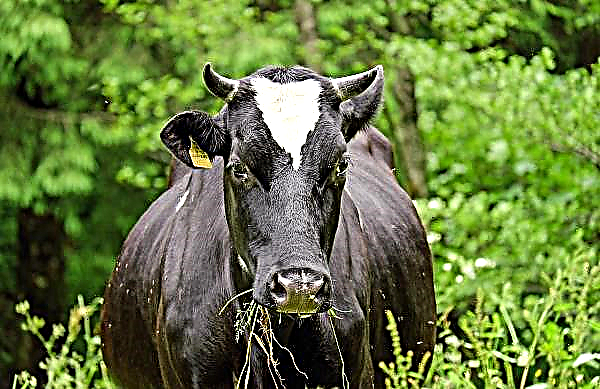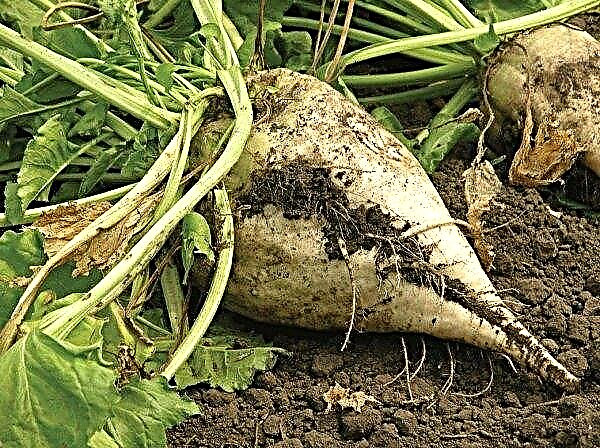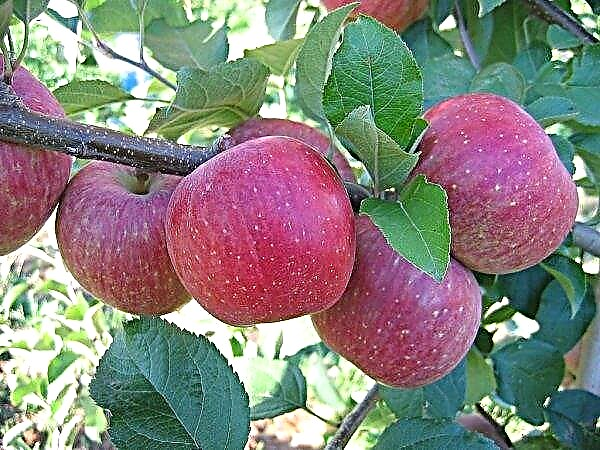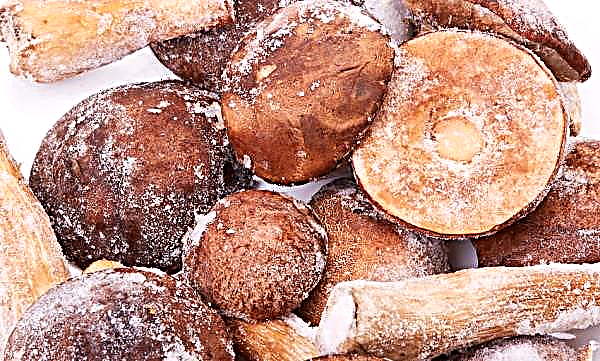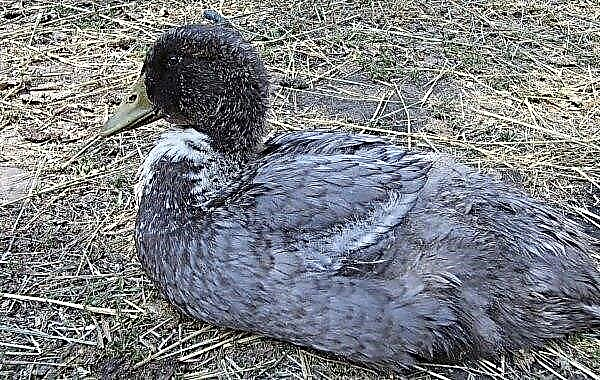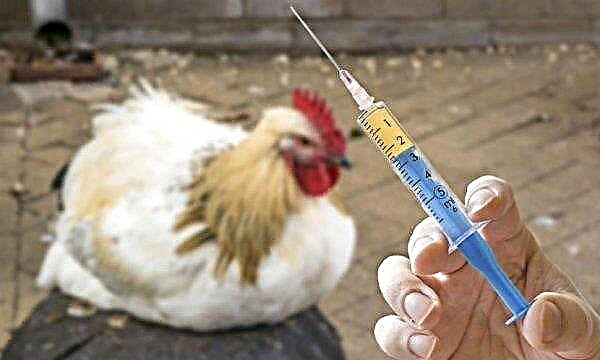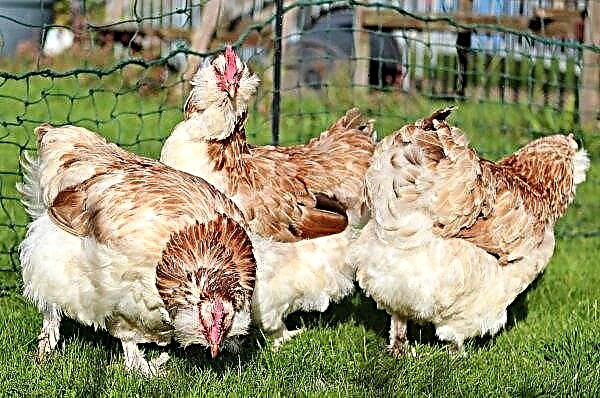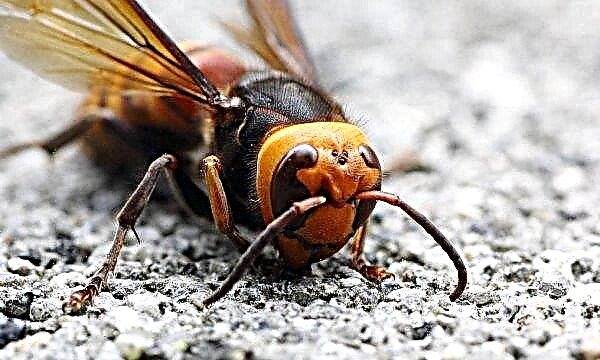Growing roses is a pleasant and fascinating activity in a summer cottage. However, these plants vary not only in the color, shape and size of the flowers, or in the type of bush (upright, weaving, creeping), but also in the agricultural technology of growing. About what conditions it is necessary to create for the Talea rose in order to fully enjoy the magnificence of its flowering, is described in this review.
Botanical description of the plant
Thalea is a hybrid tea rose variety developed in 2004 by the Dutch rose company Lex Voorn. Initially, the flower was intended for growing under cutting, but thanks to its unpretentiousness, combined with beauty and sophistication, it quickly gained popularity among amateur gardeners who began to use Talea to decorate personal plots.
Did you know? In Japan, a rose is introduced that changes color with a change in the time of day: during the day, its flowers are red, and at night it is white. The name for the variety is selected suitable - Chameleon.
The merits of the variety include the fact that its buds bloom slowly and retain their pristine freshness for a long time, without losing their attractiveness even in the late stages of flowering, which is not typical for other roses. As for the cut flowers, they can stand in a vase for a week, and sometimes a half.
No less attractive for gardeners is the ability of Talei to bloom continuously throughout the season - from late spring to late autumn, and with proper bush formation and proper care, flowering can be very plentiful.
Thalea can be distinguished from other representatives of the species by the following morphological features:
| Average bush height | 1m |
| Bush shape | Compact, vertically oriented, thick, tall stems |
| Leaves | Large, glossy, dark green |
| Bud height | 10 cm |
| The shape and structure of flowers | Classic, terry, mid-dense |
| Petals | Rounded with wavy edges, dense, with a diameter of 10-12 cm |
| Number of petals | 17–25 in a bud, 35–40 in an open flower |
| Inflorescences | More often solitary, sometimes up to 3-4 buds |
| Coloring flowers | Pastel - a combination of pink, beige, apricot, as well as ivory ("champagne"). The color in the center of the flower is more saturated than at the edges. The outer petals may be light green. |
| Scent | Subtle, delicate and delicate |
In addition to excellent decorative qualities, Dutch breeders managed to make Taleya more resistant to diseases and pests than other tea hybrid roses, and also winter-hardy, which allows it to be grown in harsh climatic conditions for roses.
Planting seedlings on the site
In order to plant Talea on his own plot, not so much is needed. If done correctly, the rose will take root, soon becoming the decoration of the flowerbed.
The timing
Roses are usually planted in spring or autumn, but the first option is more suitable for Thalei. Choosing the right time for planting is very important: on the one hand, the soil should be warm enough, and the probable late frosts should be left behind, on the other hand, the bush needs to be well rooted before dry summer days. In addition, a seedling that has appeared in the ground before its buds open is more likely to survive than a bush densely covered with young foliage.
You should not be guided by the calendar dates, since they depend on the region and current weather conditions.
Important! Rose should be planted when the soil temperature at a depth of 5-10 cm reaches + 8 ... + 12 ° С.
Selection of seedlings
Having made the decision to plant this variety of roses on the site, it is necessary to contact professional nurseries or specialized stores for the purchase of seedlings. If you have a well-established network of commerce through the Internet, finding the right product is not difficult. Buying a plant on the market or in a random tray, with a high degree of probability it is possible to become the owner of a cheaper and ordinary flower, or such a seedling will be unviable due to improper storage and transportation.
The right choice of place of purchase is the main recommendation that should be followed when purchasing a seedling: a seller who values his reputation always cares about the quality of his product.
However, if in doubt, you can distinguish a good and healthy seedling of a hybrid tea rose by the following criteria:
- optimal age - 1-2 years;
- the number of stems - 2 or 3 pcs .;
- the quality of the stems is a plain color, smooth bark, the presence of woodiness;
- the state of the kidneys is sleeping (leaves, shoots and, especially, buds should not be);
- the root system is open or closed (the second is preferable, but open roots can be examined for their condition - they must be whole and healthy);
- the root neck is about 10 mm in diameter.
Seat selection
For Talei, it is necessary to choose an open area with maximum illumination, protected from the wind, especially from the north. All hybrid tea roses are difficult to tolerate drafts, but at the same time, air stagnation is detrimental to them, provoking the development of fungal infections. Therefore, it is better to protect the bush from the wind not with the dense wall of the house, but with a spreading tree growing nearby.
A rose can grow in the shade, but it will lose its decorative qualities: the stems will be thin and elongated, and the flowers will be pale, small and small.Did you know? The smallest rose in the world has flowers the size of rice grains, and the height of its bush does not exceed 15 cm. The variety is called Si, that is, "yes" in Italian and Spanish.
The soil requirements for Talei are:
- mechanical composition - light, loose, with good breathability and moisture capacity;
- nutritional value - fertile, rich in humus and minerals necessary for plants;
- reaction - neutral or close to neutral (slightly acidic).

Landing pattern
It is better to dig a hole for a rose in advance so that the earth has time to sag. The depth of the hole depends on the size of the earthen root of the seedling, but on average it is 30-50 cm with the same diameter. If the soil is swampy, or groundwater runs close to the surface of the earth, drainage should be placed at the bottom of the pit - broken brick, gravel or sifting, then sprinkled with a small layer of soil.
The earth extracted from the pit should be mixed in equal parts with humus and a little superphosphate should be added to the resulting substrate.
So that the medium-tall bushes of Thalea could grow freely, without interfering with each other, the distance between them should be at least 40 cm.
Before planting, the seedling is subjected to sanitary pruning: it is necessary to shorten the roots a little, remove dried and damaged stems. If the root system of the plant is open, it is useful to stand it for about 5 hours in warm water before planting, this will facilitate the rooting process.Care Tips
Despite the strong immunity and relative unpretentiousness of Talei to the changing environmental conditions, to ensure abundant and prolonged flowering of roses, the plant needs to provide proper care, namely: watering, fertilizing, protection against weeds, pruning.

Watering
Thalea is sensitive to drying out of the soil, but it must be watered correctly. Frequent surface wetting of the soil is not suitable for this plant. An adult bush needs at least 10 liters of water entering the soil at the same time, while the frequency of irrigation, with the exception of periods of extreme heat, should not exceed once a week. Heated water should be used so that the contrast between the temperature of the water and the soil is minimal.
The frequency of watering should also vary depending on the season: if at the beginning of the growing season Taleya needs more moisture, then in the second half of summer its volume must be reduced, otherwise the bush will form shoots that do not have time to ripen before the onset of cold weather. A rose needs less air humidity than soil moisture, moreover, it can harm a plant, therefore it is better to water the bush under the root, especially during flowering.Important! Instances grafted onto rose hips tolerate drought more easily than roses grown on their own root system.

Fertilizer application
The frequency of feeding Talei depends on the vegetation phase: in the period of abundant growth (in spring and in the first half of summer), the rose needs the maximum amount of nutrients, and after the formation of young stems and the beginning of budding, excess nitrogen in the soil can significantly reduce the flowering intensity. At the same time, at that time, such minerals as phosphorus, potassium, and boron became important.
To feed Talei, they use the following scheme:
| Fertilizer application time | Top-dressing composition |
| Spring, the period of awakening of the kidneys | Nitrogen fertilizer, for example, urea or ammonium nitrate - 1 tbsp. liters per 10 liters of water. |
| Bookmarking the buds (approximately three weeks after the first feeding) and, if necessary, another 1-2 times during the season | Potash and phosphorus fertilizer. Suitable organics, for example, chicken droppings or slurry - a solution of 1:20 or 1:10, respectively. In the prepared solution, you can add potassium sulfate and superphosphate - 12 g per 10 liters. |
Loosening and weed control
Loosening the soil after each irrigation and rain, as well as regular weed weeding, are important steps in caring for the Thalea rose. To save themselves from doing this not very pleasant job, experienced gardeners use the method of mulching the soil. The essence of this technique is that the trunk circle, completely cleared of weed grass, is covered with organic material with a layer of 4 to 6 cm, and as the mulch rotes, it must be dug up, mixed with the ground, and a fresh cover placed on top.
For mulching roses, the following materials are usually used:Did you know? Rosa is the undisputed leader among plants in the number of works of art dedicated to her. Nobody succeeded in recounting all of them, although the Americans claim that it was in their country that at least four hundred songs about this flower were written.
- hay (best meadow);
- rotted sawdust (fresh for this purpose are not suitable);
- compost;
- peat;
- dung or bird droppings.

Pruning
Pruning is one of the most important points in growing roses, which often causes the most difficulties for beginners. In order to learn how to prune roses correctly, you need to understand the goals of the procedure, which depend on the time of its implementation.
Important! The purpose of spring pruning of roses is to form a bush, stimulate its growth and flowering. In autumn, the plant is pruned to make it easier to cover, and also to prevent rotting and rotting of shoots (sanitary pruning).
Talea lays buds on young shoots. This means that old and faded stems need to be removed - in this way a large bush is formed with numerous basal processes, abundantly covered with luxurious flowers.
Trimming Rules:
| Spring | Fall |
| Alignment of healthy stems at a height of 5–6 buds (approximately 15 cm in young bushes and 20–25 cm in adults). Removing intersecting, obscuring or “duplicating” each other, as well as shoots directed inside the bush. Getting rid of excess growth at the base of the bush. | Removing dried up, stiffened, sick, weak and not having time to form stems. Thinning shoots. Shorten the remaining stems by about 60%. Removing all leaves. |
In addition, in order to preserve the aesthetics of the bush, Talea must be cut during the entire flowering period. At this time, buds that dry up and lose their attractiveness, as well as those that look small, weak and lagging behind, are removed. This method allows the remaining flowers to receive the maximum number of vital juices, due to which they form large and bloom longer.
Spring pruning is carried out in late March - early April. In autumn, the rose should be pruned as late as possible, bearing in mind that this procedure stimulates the growth of the bush, so it is important that the buds have time to completely fall asleep.
Important! After pruning, the stems must be treated with 3% solution of iron sulfate or 1% solution of copper sulfate. This will allow the plant to cope more easily with stress and build up strength for subsequent growth.
Shelter for the winter
All hybrid tea roses are highly frost-resistant; in Talea this quality is more pronounced than in other representatives of the group. A healthy bush with no visible damage can withstand prolonged freezing to –17 ° C and a short-term drop in temperature to –23 ° C. Nevertheless, so that the buds do not die as a result of severe frosts and give young strong shoots in the spring, roses for the winter must be covered.
Traditionally, sheltering roses for the winter is carried out immediately after the autumn pruning of the bush. Prematurely carrying out the procedure leads to rotting and softening of the wood, as a result of which the plant weakens and loses its natural resistance to the coming frosts. In addition, it is useful for the bush to survive the first frost without shelter, thus hardening the rose, and the likelihood of its subsequent freezing out is reduced.
A bush trimmed to 2-3 buds is covered with soil so that its layer rises no less than 20 cm from the base of the stem. Each plant will require approximately a bucket of soil (10 l).
However, such a quantity of fresh land can not always be obtained on the site, so sometimes another method of shelter is used. On top of the bush, it is necessary to install an inverted wooden box or a box of thick cardboard, and it is desirable to pre-cover the external area of the tank with a mixture of clay, lime and water, which will protect the plant from rodents. Then, the resulting structure is covered with a layer of wood sawdust or straw, or covered with coniferous spruce branches.
An even simpler method of preparing a rose for winter is the use of lutrasil. This modern textile material is designed to solve many agricultural problems, including sheltering plants from frost. You should buy light-colored fabric with a density of at least 30 g per 1 m² and cover it with a bush in two layers.
After the first snowfall, it is useful to warm up a high snowdrift to the shelter and then update it at every opportunity, making sure that after the thaw and subsequent frosts the snowdrift is not covered with ice crust (if this happens, ice must be cleaved).Important! You can’t use fallen leaves or dry grass to shelter the roses, since pests overwinter in such an environment, which will cause the plant a lot of trouble in the spring. Peat and sand are not suitable: these materials freeze easily.
After the arrival of spring, shelter is removed gradually, layer by layer, so that the rose does not experience shock from a sharp change in temperature. The organic residues used to protect the bush can not be removed, but spread around the stem as mulch, this will allow longer to maintain moisture and friability of the soil, prevent the growth of weeds and additionally enrich the soil.
Talea can be a true discovery for anyone who believes that truly noble and elegant roses can be grown only in a greenhouse equipped with the latest technology.In this variety, Dutch breeders managed to combine amazing beauty and tenderness with unpretentiousness, resistance to diseases, pests and natural disasters, as well as long and abundant flowering. The combination of these qualities makes the cultivation of Talei in a summer cottage not only possible, but also not too burdensome.


